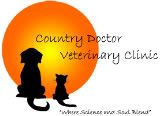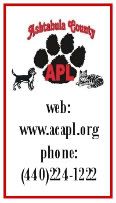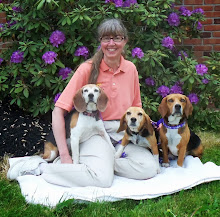How does one week become two? It's called Dr. C. going on vacation and Dr. Di holding down the fort. Makes for little blogging time. So sorry. *grin*
Part one was an introduction to pet obesity. The biggest challenge that I face as a veterinarian talking about obesity is to convince people that being a chubby pet is not just cosmetic. It is a life threatening medical condition. It makes pets feel miserable. I know this because I see the difference between thin pets and fat pets. But to someone who has a chubby pet that is happy and wagging his tail, how do I convince someone that their chubby ball of fur would be even happier and live even longer? It's a tough challenge to be sure.
First, how does one know what is "normal" body weight? Start with looking at a body condition scoring chart. This is a chart that veterinarians use on medical records to show if a pet is normal, underweight or overweight. There are a lot of these charts out and about on the web. Purina has a great 9 point chart that I like to use, but the 5 point charts are probably simpler. Ohio State University has a good 5 point chart on their web site. Now I do have one pet peeve about most of these charts. Almost all will say something like "ribs palpable". Is palpable a word in common usage that most people know the meaning? I know what the word means, but do you (if you are not in a medical profession)? Why can't the charts just say "ribs can be felt". Simple and easy to understand.
Another hurdle to overcome in normal vs overweight debate is that more of our dogs and cats are overweight than are normal weight. I absolutely believe this is true. Pet owners are losing sight of what normal should look like because their neighbors, friends and relatives commonly have overweight pets. Overweight has become the "norm". But this is NOT healthy.
The third challenge is convincing owners that a dog or cat with a strong drive for food is starving if they beg, steal or "wolf" down their food. Food drive or appetite is an interesting phenomenon. Certainly having a strong drive to eat serves our wild carnivores well. If a wolf pack takes down an elk or a deer, it is the strongest and most aggressive wolf that gets the most from this feast. They have no way of knowing when their next meal will come. It could be a week or two at least. Our domestic pets have some of this instinct built in. We feed the dog at 8am and it chows down its food. The dog doesn't know that its next meal will be later in the day. It needs to eat its meal all and eat it right now. There might be no later. This is good for the wolf. Not good for the dog that snoozes on the sofa all day and gets daily food and treats.
Last but not least is realizing just how many calories there are in most dry foods. Although there are exceptions, a lot of dry dog and cat food has 400 or more calories per cup of food. If the average sized cat needs around 180-200 calories per day, this means a cat should be eating about 1/3 to 1/2 cup of food per day. How many cats will eat this little if food is left out all the time? Hey, leaving a bowl of dry food out all day for the cat to nibble on as it likes is how I was always taught to feed the cat. Sorry, but this feeding practice leads to a lot of chubby cats. We all need to learn new ways to feed our pets now that they sleep on the bed and bask in the sunshine streaming through the window.
Well, I said I would show you Tuff's picture in this blog, but it will have to wait as this blog is getting too long. Next blog: what can you as a pet owner do if you find out your pet is chubby and needs to lose weight. Stay tuned.
Subscribe to:
Post Comments (Atom)








No comments:
Post a Comment